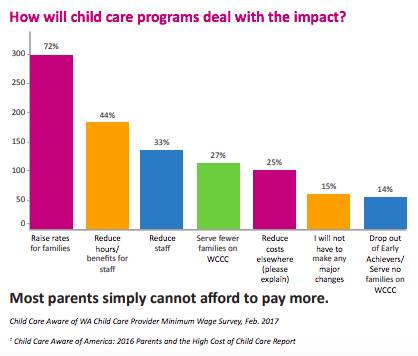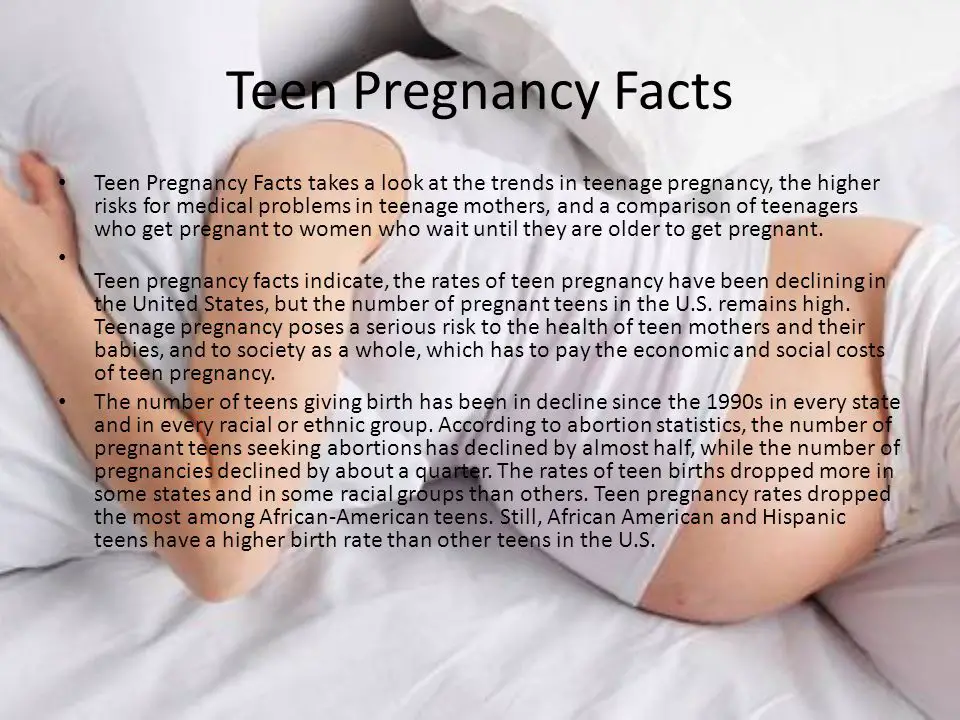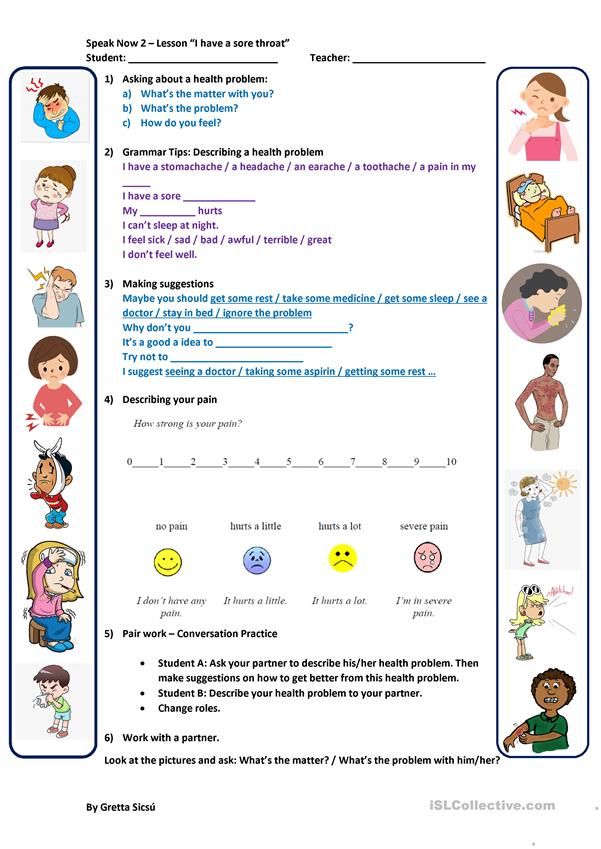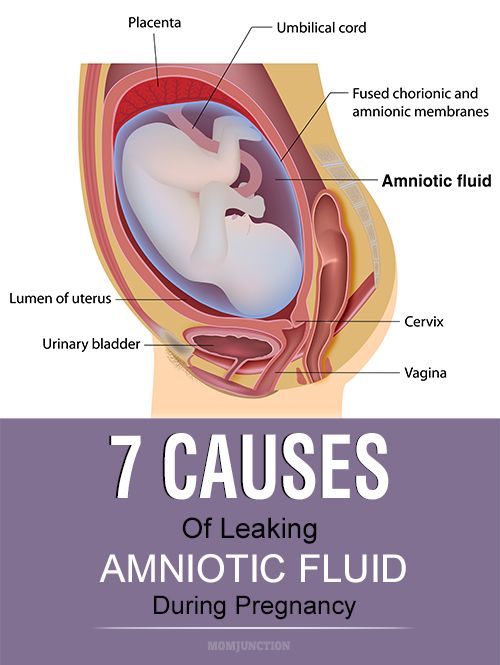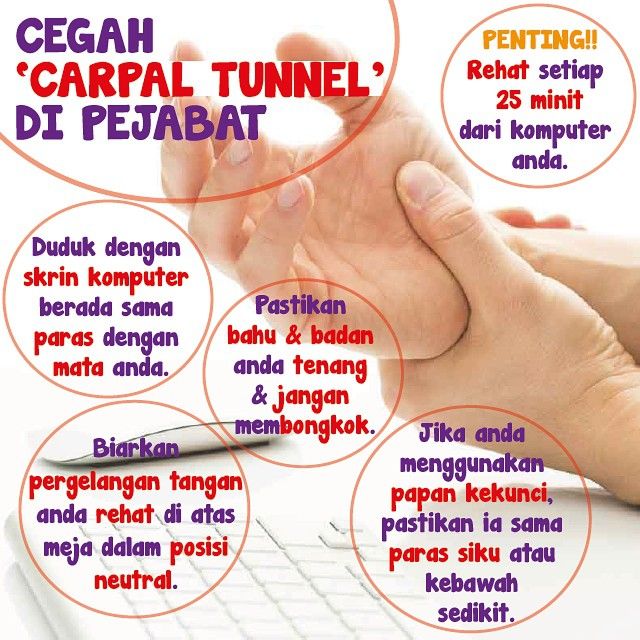How much does child care cost a week
This is how much child care costs in 2022
More than half — 59% — of parents say they’re more concerned about child care costs now than in years prior. That’s just one finding of many in the Care.com 2022 Cost of Care Survey that illustrate the uphill battle parents are facing when it comes to affording and accessing quality child care.
The world has changed immeasurably over the last two years due to the pandemic and economic struggles, and families have certainly felt the shift when it comes to the cost of child care. Making matters worse: Nearly 9,000 day cares closed in 37 states between December 2019 to March 2021, according to findings from a new 2022 survey by ChildCare Aware.
“When it comes to child care, there are three critical criteria – cost, quality and availability – and based on our research findings, we’ve not only failed to make progress as a country, we’ve actually gone backwards,” said Natalie Mayslich, President, Consumer, Care.com. “Costs are growing while availability is shrinking and that’s having a profound impact on the workforce and consumer spending. We’ve all seen what happens when parents can’t work; making child care more affordable and accessible has to be a priority for all.”
New data from the ninth annual Care.com 2022 Cost of Care Survey reveals:
- The cost of child care is higher for families in 2022. 51% of parents say they spend more than 20% of their household income on child care, and 72% of parents report spending 10% or more. This is up from 70%, according to Care.com data from pre-pandemic 2019, the most recent year that mirrors parents’ options today.
- Quality child care continues to be tough for parents to find. In fact, 43% of parents say it’s much harder to find child care over the past year.
- Parents continue to struggle to pay for child care. In fact, 59% are more concerned about child care costs now than in years prior, which is driving significant changes, such as taking on a second job (31%), reducing hours at work (26%), changing jobs (25%), and leaving the workforce entirely (21%), to foot the bill.

How much does child care cost?
The cost of child care is on the rise
Based on the 2022 Cost of Care Survey, child care is not in the affordable range for most families. Of parents surveyed, 72% say they are spending 10% or more of their household income on child care, with a majority (51%) spending more than 20% or more. Yet according to the U.S. Department of Health and Human Services (HHS), child care is considered affordable when it costs families no more than 7% of their household income.
According to survey data, 63% report that child care is more expensive over the past year. The reasons parents say prices are skyrocketing include:
- Child care centers increased costs (46%).
- Inflation (41%).
- Child care centers taking fewer children (36%).
Interactive: Check out our Cost Calculator to figure out how much child care costs in your area.
The cost of child care can exceed that of a college education
The survey also finds that more than half of families (58%) plan to spend more than $10,000 on child care this year, which is more than the average annual cost of in-state college tuition ($9,349) per EducationData.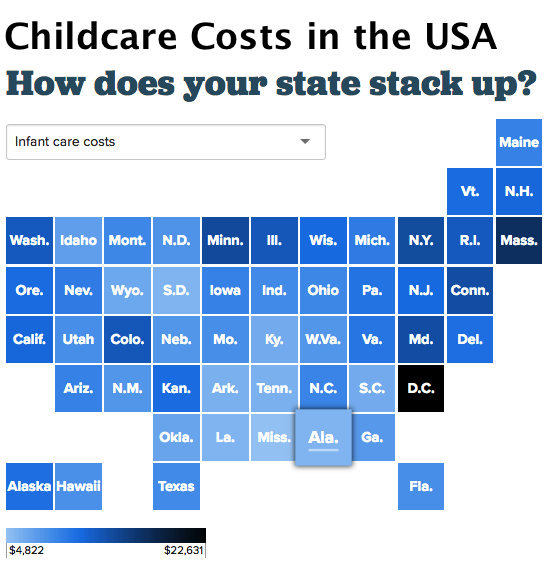 org.
org.
Every type of child care is pricier than it was pre-pandemic
Overall, the average child care cost for one child in 2021 was $694/week for a nanny (up from $565/week in 2019), $226/week for a child care or day care center (up from $182/week) and $221/week for a family care center (up from $177/week).
Below are the 2021 national averages of weekly child care costs for each type of care, compared to costs in 2019.
National average weekly child care rates
| 2021 | 2019 | 2021 | 2019 | |
| One child | One child | Two children | Two children | |
| Nanny* | $694 | $565 | $715 | $585 |
| Child care center (toddler) | $226 | $215 | $429** | $409** |
| Family care center* | $221 | $201 | $420** | $382** |
| After-school sitter | $261 | $243 | $269 | $246 |
*Rates for infant children.

**Rates for two children calculated by adding the weekly rate for one child and the weekly rate for the second child with a national average sibling discount of 10%.
What’s the impact of rising child care costs on parents?
More than half — 59% — of parents say they’re more concerned about child care costs now than in years prior. The good news is that the majority (68%) budget for child care costs and nearly two-thirds (65%) say they will stay within or under budget.
Parents are cutting back on essentials
In turn, parents are making sacrifices to afford care and cutting back on budgets for:
- Vacations and travel (51%).
- Leisure activities (51%).
- Food, dining (45%).
- Clothing (41%).
- Extracurriculars (37%).
They’re also overhauling their work — and personal — lives
Many also plan to make the following work changes to adhere to rising care costs:
- 31% are considering taking on a second job.

- 26% are reducing hours at work.
- 25% are changing jobs.
- 21% leaving the workforce entirely.
Survey respondents are also adjusting their family plans to stay on track financially. 35% say they’re less likely to have more children with 43% listing the rising cost of child care as a major reason why.
How accessible is quality child care?
Parents say it’s harder to find child care providers than it was last year
Almost half of parents surveyed — 43% — say it’s much harder to find child care providers over the past year. According to our survey:
- 40% are having trouble finding a nanny.
- 39% are struggling to get care through a family care center.
- 37% find it challenging to book a babysitter.
- 36% are facing an uphill battle with finding a quality day care.
Child care providers are pricier to come by in some areas
Depending on where families live, the cost of hiring a nanny or paying for a day care can well exceed the national average.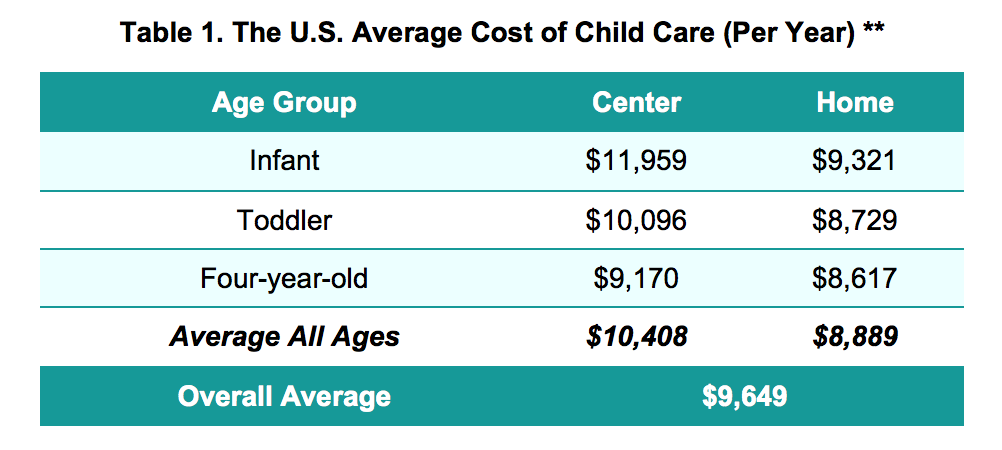 For example, in the District of Columbia, the cost of a nanny ($855 a week) is 23% above the national average, and the cost of day care ($419 a week) is 85% above the national average.
For example, in the District of Columbia, the cost of a nanny ($855 a week) is 23% above the national average, and the cost of day care ($419 a week) is 85% above the national average.
These are the priciest places to live if you’re hiring a nanny or sending kids to day care:
| State | Weekly Rate | $ Above National Avg | % Above National Avg |
| 1. District of Columbia | $855 | $161 | 23% |
| 2. Washington | $840 | $146 | 21% |
| 3. Massachusetts | $834 | $140 | 20% |
| 4. California | $829 | $135 | 19% |
| 5. Colorado | $763 | $69 | 10% |
| 6. Oregon | $741 | $47 | 7% |
| 7. New York | $736 | $42 | 6% |
| 8. Connecticut | $734 | $40 | 6% |
9.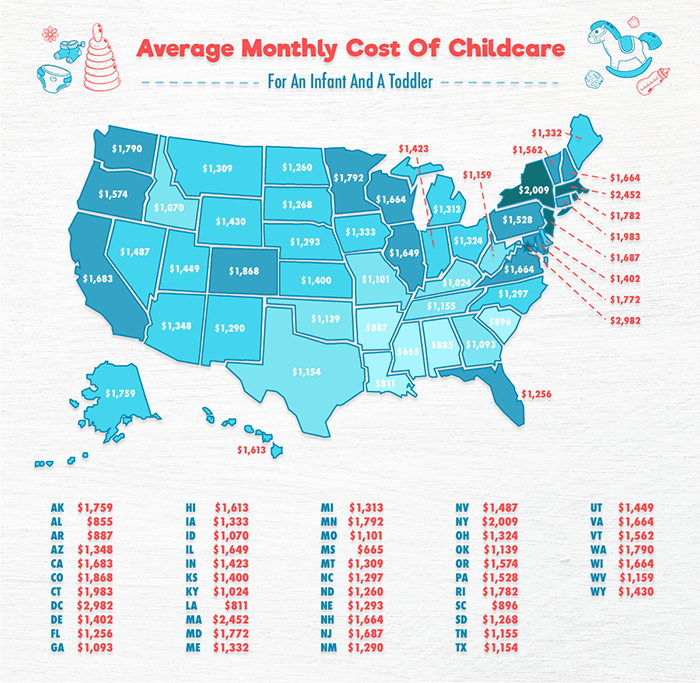 New Jersey New Jersey | $715 | $21 | 3% |
| 10. Vermont | $706 | $12 | 2% |
| State | Weekly Rate | $ Above National Avg | % Above National Avg |
| 1. District of Columbia | $419 | $193 | 85% |
| 2. Massachusetts | $324 | $98 | 44% |
| 3. Washington | $304 | $78 | 34% |
| 4. California | $286 | $60 | 26% |
| 5. Connecticut | $258 | $33 | 14% |
| 6. New York | $258 | $32 | 14% |
| 7. Arkansas | $255 | $29 | 13% |
| 8. Maryland | $254 | $28 | 12% |
| 9. Colorado | $254 | $28 | 12% |
| 10. Oregon | $249 | $23 | 10% |
How can you save money on child care?
As the cost of child care continues to rise, consider these steps to make the expense more affordable.
Find the best care for your budget
Once you’re clear on what you can afford, you can steer toward the child care option that’s the best fit for your family. The first step: Research current rates in your area. Care.com has free interactive tools you can use to identify the average costs of full-time child care, nanny and babysitter rates and nanny taxes in your region.
Discuss care benefits with your employer
Whether you’re hoping to find backup child or adult care or utilize paid family leave, it can pay to investigate whether or not your employer offers family care benefits. And if they don’t, ask for them.
It’s quite possible that they’ll be open to the idea now more than ever. Due to the pandemic, 57% of employers are prioritizing child care benefits more this year, and 63% said they plan to increase their company’s already existing child care benefits, according to Care.com’s 2021 Future of Benefits Report.
Set aside pre-tax dollars to pay for care
Talk to your workplace Human Resources department to see if a Dependent Care Account (a type of flexible spending account, or FSA) is available to you and how you can get started.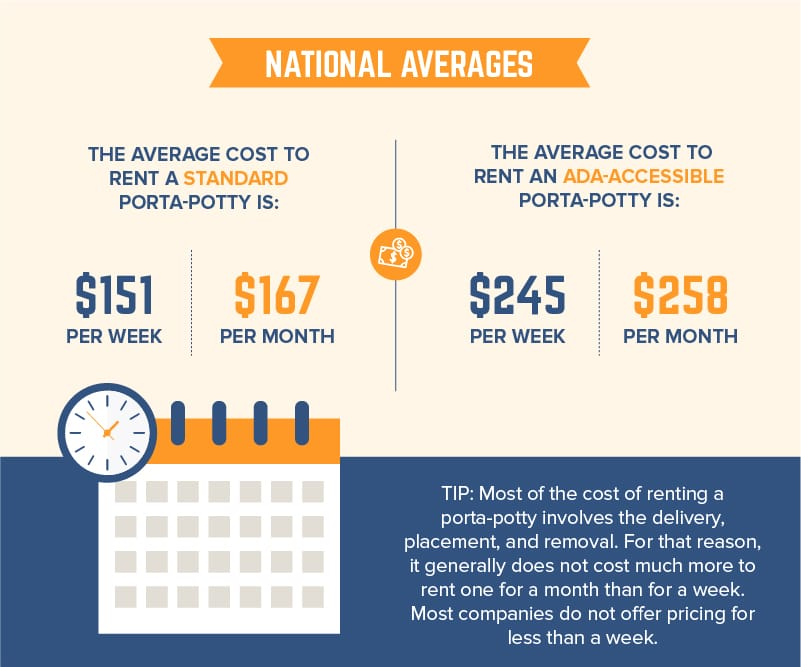 With this account, you can put aside up to $5,000 in pre-tax dollars in your Dependent Care Account to pay for dependent care expenses. (Generally, only one spouse can enroll.)
With this account, you can put aside up to $5,000 in pre-tax dollars in your Dependent Care Account to pay for dependent care expenses. (Generally, only one spouse can enroll.)
The savings you will ultimately see varies depending on what your marginal tax rate is. A good approximation is around $2,000 in tax savings, assuming the family uses the full $5,000.
Make the most of tax breaks and credits
By paying your caregiver on the books, you can take advantage of tax breaks and credits. For example, by itemizing care-related expenses on your federal income return, you could receive a Child and Dependent Care Tax Credit on up to $600 of care-related expenses if you have one child, or $1,200 of care-related expenses if you have two or more children.
This year’s Cost of Care survey concluded that just over 1/3 of parents (34%) did not claim the expanded child care tax credit on their 2021 taxes, and 43% say that’s because they were unaware of it.
In addition, parents can save $2,000 per child using the Child Tax Credit.
Research child care subsidies and programs
Depending on your income, employee benefits and other factors, your family might qualify for a variety of cost-cutting child care subsidies. We’ve rounded up various programs, resources and other options that could reduce how much you’re paying for quality care.
__________________________
2022 Cost of Care Survey methodology
This scientific sample of 3,003 US adults (18 years or older) who are all parents paying for professional child care was surveyed between March 24, 2022, and March 30, 2022. All respondents are parents of children 14 years or younger and currently pay for professional child care, confirmed by both consumer-matched data and self-confirmation. DKC Analytics conducted and analyzed this survey with a sample procured using the Pollfish survey delivery platform, which delivers online surveys globally through mobile apps and the mobile web along with the desktop web. No post-stratification has been applied to the results.
- The Care.com Cost of Child Care Survey: 2021 Report
- The Care.com Cost of Child Care and COVID-19 Child Care Surveys: 2020 Report
- The Care.com Cost of Child Care Survey: 2019 Report
- The Care.com Cost of Child Care Survey: 2018 Report
- The Care.com Cost of Child Care Survey: 2017 Report
- The Care.com Cost of Child Care Survey: 2016 Report
- The Care.com Cost of Child Care Survey: 2015 Report
- The Care.com Cost of Child Care Survey: 2014 Report
Average Cost of Child Care 2022
Cavan Images/Getty Images
6 min read Published July 07, 2022
Bankrate logoHow is this page expert verified?
At Bankrate, we take the accuracy of our content seriously.
“Expert verified” means that our Financial Review Board thoroughly evaluated the article for accuracy and clarity. The Review Board comprises a panel of financial experts whose objective is to ensure that our content is always objective and balanced.
Their reviews hold us accountable for publishing high-quality and trustworthy content.
About our Review Board
Bankrate logoThe Bankrate promise
At Bankrate we strive to help you make smarter financial decisions. While we adhere to strict , this post may contain references to products from our partners. Here's an explanation for . The content on this page is accurate as of the posting date; however, some of the offers mentioned may have expired. Terms apply to the offers listed on this page. Any opinions, analyses, reviews or recommendations expressed in this article are those of the author’s alone, and have not been reviewed, approved or otherwise endorsed by any card issuer.
When planning for a baby, there are a number of costs that parents will take into consideration before their bundle of joy arrives. Child care is often the most expensive line item.
Yet access to reliable child care is essential for many families who rely on this support in order to be able to work full-time jobs, attend school and increase their own wealth. This need was highlighted during the height of the pandemic when parents, predominantly mothers, began to leave the workforce in droves as schools, daycares and child care centers shut down or transitioned to a remote model. Many women are still recovering from the financial impact.
This need was highlighted during the height of the pandemic when parents, predominantly mothers, began to leave the workforce in droves as schools, daycares and child care centers shut down or transitioned to a remote model. Many women are still recovering from the financial impact.
Despite the need for child care, it appears that cost will continue to rise for families all over the country. According to the latest Care.com Cost of Care Survey, the cost of child care is higher for families in 2022. Over half of the parents surveyed report spending more than 20 percent of their household income on child care, and 72 percent of parents report spending 10 percent or more. This is up from 70 percent, according to Care.com data from 2019, the most recent year that mirrors parents’ options today.
LightbulbBankrate insight
- The average weekly cost of a nanny for one child in 2021: $694
- The average weekly cost of a child care or daycare center for one child in 2021: $226
- The average weekly cost of a family care center for one child in 2021: $221
- The average weekly cost of an after-school sitter for one child in 2021: $261
- Most expensive state for hiring a nanny: Washington, D.
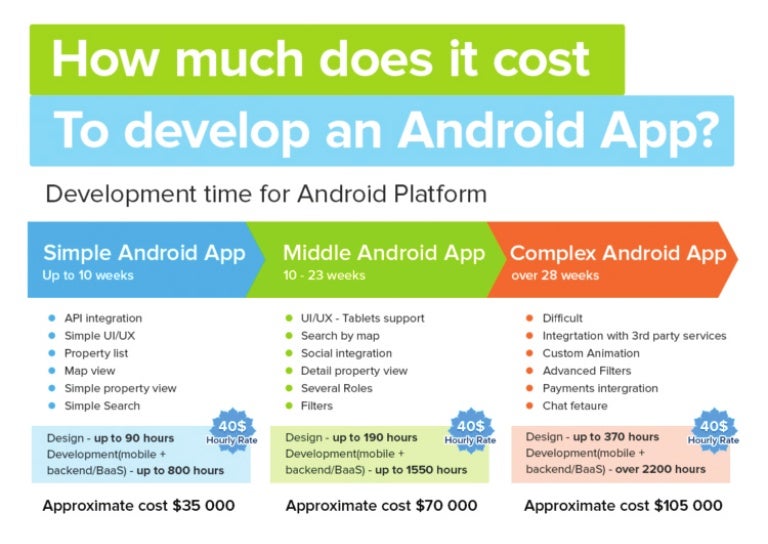 C.: $855 per week
C.: $855 per week - Most expensive state for daycare: $419 per week
- Percentage of parents who cite rising child care costs as their reason for adjusting their family plans: 43 percent
- Percentage of parents who spend more than 10 percent of their annual income on child care: 72 percent
- Percentage of parents who spend more than 20 percent of their annual income on child care: 51 percent
- The average amount spent on child care per month: $850
- The average amount spent on a nanny per month: $2,450
- Percentage of employers who offer some form of child care benefit: 56 percent
The cost of child care in various settings
The amount you can expect to pay for child care will vary greatly depending on the setting. Some parents might prefer to keep their child at home with a nanny, others may want to take their child to a daycare center. Some parents may not need full-time care and opt for an after-school care program that gives them the extra time they need to get through their work day.
Here’s a look at the average cost of child care depending on the type of care you seek. These figures are based on the 2021 costs for infant children (with the exception of after-school care costs):
| 1 | $226 | $694 | $221 | $261 |
| 2 | $429 | $715 | $420 | $269 |
It’s also important to note that the amount you pay will also change depending on your child’s age. The amount you pay for child care will vary depending on how many children you have, as well as their ages. In most cases, you can expect to pay more for a delicate infant who requires more hands-on attention than you would for an elementary-aged child who is more independent. With such a wide range of costs, it’s important to weigh your options and determine which environment will best meet you and your family’s needs.
Child care/daycare centers
| Often more affordable than a private nanny | Often a lengthy waiting list |
| Reliable care and regular hours | Caregivers caring for multiple children at the same time |
| Opportunity for children to socialize with other children in the same age group | Exposure to more illnesses in a group setting |
| Staff members often trained in early childhood education | Often strict pick-up and drop-off times that may not work with your work schedule |
| Daycare centers are licensed and regulated, ensuring ample supervision and quality care | Typically closed during major holidays |
Home/ family care
| Usually less expensive than other child care options | Can be unreliable if the caretaker gets sick or takes time off |
| Often a more comforting and nurturing environment | Your child may be exposed to more illnesses in a group setting |
| Typically smaller groups of children | Potential lack of formal childhood education background among home daycare providers |
| Opportunity for children to socialize with other children in the same age group | Fewer licensing requirements |
| Often more flexible pick-up and drop-off times | Many closed for holidays and vacations |
Nanny/sitter
| More personalized care for your child | Typically the most expensive child care option |
| No need to commute to a daycare center | Zero supervision |
| Flexible hours | Need for planned activities so your child can socialize with others in their age group |
| A setting more familiar to your child | Can be unreliable if your nanny becomes sick, goes on vacation or quits unexpectedly |
| Child care available if your child gets sick | Can involve a great deal of legal paperwork |
After school care
| Defined curriculums and planned enrichment activities for your children | Only open during the school year |
| Often an affordable option | Possibly overwhelming number of hours for your child to spend at school |
| Boosts social skills | Interrupts unstructured play time |
| Licensed and regulated | Can blur lines for parents and make it harder to establish a hard stop time at work |
| On school property, meaning you can skip a commute | May not be an option for all of your children if they vary in age |
The most (and least) affordable states for childcare
Several factors will impact how much you can cover in terms of child care costs, including your family makeup. Here’s a look at the five most affordable and least affordable states for child care, as well as the percentage of your annual income that you can expect to pay for child care whether you’re a single parent or if both you and your spouse will contribute to these costs.
Here’s a look at the five most affordable and least affordable states for child care, as well as the percentage of your annual income that you can expect to pay for child care whether you’re a single parent or if both you and your spouse will contribute to these costs.
| Utah | $8,268 | 25.3% | 8.9% |
| Florida | $7,186 | 24.3% | 8.3% |
| Missouri | $7,062 | 26.1% | 7.6% |
| South Dakota | $6,667 | 23.7% | 7.2% |
| Mississippi | $5,439 | 25.5% | 6.7% |
| Massachusetts | $16,781 | 51.4% | 12% |
| Washington | $13,404 | 41.2% | 12.4% |
| New York | $12,844 | 41.7% | 11.6% |
| Vermont | $12,835 | 41.6% | 12.8% |
| Michigan | $11,086 | 41. 8% 8% | 11.4% |
The state of child care today
Child care costs have been on the rise for decades, but the pandemic certainly made matters worse for many families. Nearly 9,000 daycares closed in 37 states between December 2019 and March 2021, according to findings from a new 2022 survey by ChildCare Aware. This increase in closures, paired with a rise in popularity of remote learning models, forced many families to rethink their priorities. In many households, one of the parents or family members assumed child care responsibilities.
Most recently, inflation has also contributed to these rising costs. In fact, a recent report found that child care costs are outpacing inflation by more than 3 percent. This, paired with higher costs for everyday goods like groceries, gas and housing, is making child care significantly less accessible, particularly for lower-earning families.
How parents and guardians are managing the costs
For many parents, coping with rising costs has been a challenge. Many have considered alternative options and made bigger lifestyle changes to make ends meet. According to the Care.com survey, 31 percent of parents say they have considered taking on a second job. Of those surveyed, 26 percent say they will reduce their work hours. A quarter of these parents are changing jobs, and more than 20 percent say they plan to leave the workforce altogether.
Many have considered alternative options and made bigger lifestyle changes to make ends meet. According to the Care.com survey, 31 percent of parents say they have considered taking on a second job. Of those surveyed, 26 percent say they will reduce their work hours. A quarter of these parents are changing jobs, and more than 20 percent say they plan to leave the workforce altogether.
If you’re looking for a starting point to help you determine how much you can expect to pay for child care in your area, Care.com and CostofChildCare.org both provide useful calculators that can crunch the numbers for you based on your preferences and needs.
6 ways to lower the costs of child care
If you’re struggling to meet your child care costs, there are a number of ways you can reduce that financial burden.
- Reach out to your employer: Some employers offer child care assistance as an added benefit for their employees. Revisit your employee benefits package, or contact your HR representative to see if this is an option for you.

- See if you qualify for a tax break: Per the IRS, you may be able to claim the child and dependent care credit if you paid expenses for the care of a qualifying individual to enable you (and your spouse, if filing a joint return) to work or actively look for work. This could help offset care costs for this year or next.
- Check your flexible-spending account: FSA’s are sometimes part of an employee’s benefits package and can be used to offset child care expenses. You or your spouse can fund a dependent care flex spending account (DCFSA or FSA) and use those funds to reimburse your daycare costs.
- Ask about a sibling discount: Many child care providers will offer a discount for a second or third child. Taking all of your little ones to the same daycare or sitter will help you cut down on your commute and could score you a discount.
- Consider using a credit card: If you’re in a pinch, a credit card could help you cover the cost of child care, but this should be done cautiously.
 Aim to make at least the minimum payment each month, and pay your balance in full if possible. Also, remember to take advantage of your credit card rewards.
Aim to make at least the minimum payment each month, and pay your balance in full if possible. Also, remember to take advantage of your credit card rewards. - Coordinate a nanny share with other parents: Sharing one care provider may be less costly than hiring a private nanny to watch over your children. Ask friends, family or neighbors if they’re open to splitting the costs of a shared nanny.
Bottom line
Child care costs can put a significant financial strain on a family — especially for today’s parents who are up against a staggering inflation rate and are still battling the economic aftermath of the pandemic. The exact amount you can expect to pay will vary greatly depending on your location, how many children you have, how old your children are, the kind of care you seek and more. Still, there are plenty of ways you can reduce the cost of child care and make it manageable for you and your wallet.
Caring for a newborn baby - a note to mom
During the first year of life, a child makes a giant leap in his physical and emotional development (just imagine that his brain grows 1. 5 times!). But parents also learn a lot, especially if the baby is the first. “How to care for the ears, nose, eyes is, of course, very important, and we will definitely talk about it. But it is equally important to learn to feel your child, ”according to Yulia Viktorovna Andronnikova, pediatrician of the highest category, head of the pediatric department of the Center for Traditional Obstetrics and Family Medicine, this feeling of security and love will accompany the child all his life. nine0003
5 times!). But parents also learn a lot, especially if the baby is the first. “How to care for the ears, nose, eyes is, of course, very important, and we will definitely talk about it. But it is equally important to learn to feel your child, ”according to Yulia Viktorovna Andronnikova, pediatrician of the highest category, head of the pediatric department of the Center for Traditional Obstetrics and Family Medicine, this feeling of security and love will accompany the child all his life. nine0003
All children are different, their needs are different, and mom and dad will have to find their own way, relying on the opinions of specialists and their own intuition.
The only thing that can be said for sure is that extreme is always bad. And in the upbringing of children in the first place.
Breastfeeding
An important aspect of infant care is proper breastfeeding. This is “the core on which the whole care of the baby is wound. Breast sucking is the main interest of the baby in the first months of life, and in the future and for quite a long time - a priority interest. Breastfeeding helps to build the rhythm of life, help the baby in time, calm down, feed," says Lilia Valentinovna Kazakova, pediatrician of the Territory of Health and SM, AKEV breastfeeding consultant. Sucking activates the bowels. This will help to accustom to "planting" from early childhood. Just in case, let's make a reservation - breastfeeding is certainly good, but it is not a panacea and does not guarantee either good health or deeper affection. With other mother's efforts, "artificials" can easily catch up, or even overtake "babies" in all respects. nine0003
Breastfeeding helps to build the rhythm of life, help the baby in time, calm down, feed," says Lilia Valentinovna Kazakova, pediatrician of the Territory of Health and SM, AKEV breastfeeding consultant. Sucking activates the bowels. This will help to accustom to "planting" from early childhood. Just in case, let's make a reservation - breastfeeding is certainly good, but it is not a panacea and does not guarantee either good health or deeper affection. With other mother's efforts, "artificials" can easily catch up, or even overtake "babies" in all respects. nine0003
Bathing, caring for the umbilical wound and skin
Baby's skin is thin and vulnerable, sweating and diaper rash quickly appear on it. Therefore, it is necessary to arrange air baths for the child (the optimum temperature in the room is 20-22 C, humidity is 55-60%). You can bathe daily - the first month for 2-3 minutes (water - about 37 C). Then gradually increasing the time (up to 10 minutes) and lowering the temperature (by 1-2 C). It is better to use baby soap / foam less often - once a week, not more often.
It is better to use baby soap / foam less often - once a week, not more often.
"Never bathe your baby on an empty stomach." This is not a swimmer's training, but a relaxing and hygienic procedure. The kid should be calm and contented with life," reminds L. V. Kazakova. When taking it out of the water, wrap it in a large towel and immediately breastfeed (eat). He sucks, dries, calms down, and after 10-15 minutes you will calmly do everything you need. Use only sterile water to treat the remaining umbilical cord (other solutions may interfere with the natural healing process). After rinsing, dry thoroughly with a clean towel (not cotton! To avoid leaving fibers on the navel). nine0003
Hygiene for girls and boys
“The first and most important thing for a newborn girl is not to injure her genitals by mechanically removing the lubricant (she will go away on her own over time). Rinse with warm water (use soap once every 3-4 days), and then be sure to moisturize (distribute 1 drop of oil over the entire washed surface),” Galina Vladimirovna Ovsyannikova, an obstetrician-gynecologist of the Health Territory, advises washing from front to back (for this it is more convenient keep your daughter upside down). For signs of inflammation, take chamomile baths, and for more severe redness, treat with Miramistin. Another important - exclusively "female" - nuance of hygiene: "Immediately after birth, a neonatologist-pediatrician should look at the genital gap. Mom needs to be constantly monitored until 5-6 years old so that she does not overgrow (once every 3-4 days). nine0003
For signs of inflammation, take chamomile baths, and for more severe redness, treat with Miramistin. Another important - exclusively "female" - nuance of hygiene: "Immediately after birth, a neonatologist-pediatrician should look at the genital gap. Mom needs to be constantly monitored until 5-6 years old so that she does not overgrow (once every 3-4 days). nine0003
For boys, pediatricians recommend washing the genitals only from the outside (up to adolescence): during the day, if necessary, wipe with wet baby wipes, and in the evening, while bathing, wash with warm water from the outside and do not climb anywhere else (closing foreskin and smegma are the best natural defense against bacteria)! As for phimosis, up to 3 years is the norm, and a variant of the norm almost until adolescence.
Eye Care
The eyes of a newborn do not require special care. Everything that accumulates on the surface of the baby's eye is removed on its own when the baby blinks. In the morning, in the corners of the eyes, you can see the mucus accumulated during the night - this is also the norm. Rinse the eyelashes / eyelids of the baby with boiled water, wiping with a cotton swab from the outer corner to the inner.
Rinse the eyelashes / eyelids of the baby with boiled water, wiping with a cotton swab from the outer corner to the inner.
The cause of profuse discharge from the eyes of a newborn may be dacryocystitis, blockage of the nasolacrimal canal. "Proper massage allows you to cope with this disease by the age of 2 months." Massage is simple, but it will be better if a specialist shows it. Also, ophthalmologist Anastasia Borisovna Petukhova recalls that the first examination by an ophthalmologist is immediately after birth, while still in the maternity hospital, and the second is at the age of 1 month: “It is a mistake to think that nothing can be done if the child is still very small. For example, a congenital cataract is operated on at the age of 2-3 months, while later surgical treatment may not be as effective.” nine0003
Nose and ear care
Yes, they can and should be cleaned. But the main thing is not to overdo it, warns the otolaryngologist, homeopath and mother of three children Ekaterina Vladislavovna Polinskaya: “You only need to clean the auricle (by no means the ear canal!) After bathing the child.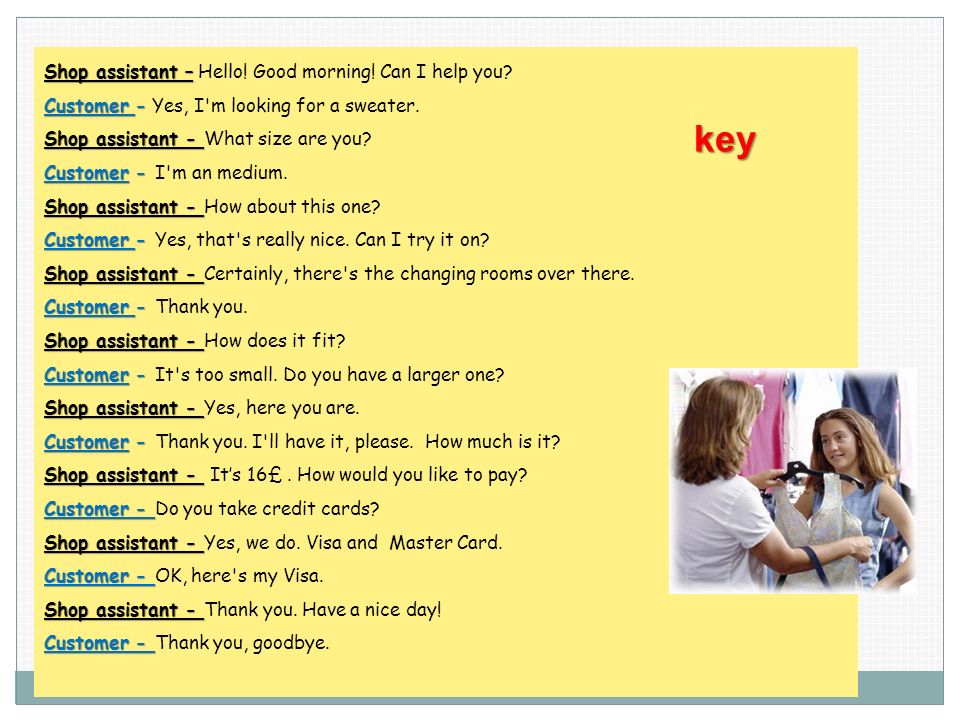 ” A small child still does not know how to blow his nose himself (he will learn this by the age of 2-3), so you can instill drops in him in the morning and in the evening based on isotonic sodium chloride solution. Children under one year of age do not need to use sprays - the auditory tube is still short and wide, this can provoke a rapid reflux of infection from the nasal cavity. The same applies to instillation of breast milk into the nose. “This is physiologically unreasonable and blocks the mucociliary clearance of the nasal cavity. Yes, milk contains proteins, fats and carbohydrates, as well as protective antibodies that are necessary for the baby. But they must still act through the oral cavity, ”explains the doctor. nine0003
” A small child still does not know how to blow his nose himself (he will learn this by the age of 2-3), so you can instill drops in him in the morning and in the evening based on isotonic sodium chloride solution. Children under one year of age do not need to use sprays - the auditory tube is still short and wide, this can provoke a rapid reflux of infection from the nasal cavity. The same applies to instillation of breast milk into the nose. “This is physiologically unreasonable and blocks the mucociliary clearance of the nasal cavity. Yes, milk contains proteins, fats and carbohydrates, as well as protective antibodies that are necessary for the baby. But they must still act through the oral cavity, ”explains the doctor. nine0003
Fundamentals of Fundamentals
Not all advances that make life easier for older people benefit the younger generation. Due to the constant use of diapers, pediatrician Yulia Viktorovna Andronnikova warns, the child may have difficulties with the formation of toilet skills, in the "diaper" he does not feel "bottom", does not realize that he is pissing - he does not have the necessary feeling of discomfort for this. Instead of disposable diapers, pay attention to "reusable" cloth diapers - they help to form the necessary skills much faster and are more physiological. The next important task for parents of babies up to a year, according to Yulia Viktorovna, is to teach them to chew and swallow correctly! “Our children drink and eat everything puree until almost 3-4 years old! This has a bad effect on chewing skills, diet. Does not "teach" the stomach to work normally. And finally, you need to organize a sleep schedule. “Unfortunately, modern children often live in a mode that is convenient for their parents: late bedtime, late rising. Whereas all the hormones necessary for the growth and proper formation of internal organs work precisely in sleep, moreover, from nine in the evening. Hug, kiss and rejoice... Together! nine0003
Instead of disposable diapers, pay attention to "reusable" cloth diapers - they help to form the necessary skills much faster and are more physiological. The next important task for parents of babies up to a year, according to Yulia Viktorovna, is to teach them to chew and swallow correctly! “Our children drink and eat everything puree until almost 3-4 years old! This has a bad effect on chewing skills, diet. Does not "teach" the stomach to work normally. And finally, you need to organize a sleep schedule. “Unfortunately, modern children often live in a mode that is convenient for their parents: late bedtime, late rising. Whereas all the hormones necessary for the growth and proper formation of internal organs work precisely in sleep, moreover, from nine in the evening. Hug, kiss and rejoice... Together! nine0003
And finally, the most important thing. The mental development of the baby, the development of different parts of the brain, and, therefore, different sensory organs, depend on the external impressions that he receives in the first year of life. “Without the proper experience of one-on-one communication with a caring adult, the orbito-frontal cortex is unlikely to be sufficiently developed. It has been found that the baby's heart rate synchronizes with the parent's, so if the parent is relaxed and calm, so will the baby. The mother's nervous system essentially communicates with the baby's nervous system, calming it down through touch." (Sue Gerhardt "How Love Shapes the Baby's Brain"). nine0003
“Without the proper experience of one-on-one communication with a caring adult, the orbito-frontal cortex is unlikely to be sufficiently developed. It has been found that the baby's heart rate synchronizes with the parent's, so if the parent is relaxed and calm, so will the baby. The mother's nervous system essentially communicates with the baby's nervous system, calming it down through touch." (Sue Gerhardt "How Love Shapes the Baby's Brain"). nine0003
By hugging our baby, we, in fact, develop and strengthen it. But we don’t spoil at all and we teach it to be handled, as other grandmothers assure us. Nod to these grandmothers and hug your little (yet small) happiness even more tenderly: this will only make it stronger!
Error 404 | Regional perinatal center
UPDATED NEWS!
⚡⚡⚡ Opening hours of the regional perinatal center for the New Year holidays.
from 31.12.2022 to 08.01.2023 Administration and outpatient departments do not work.
01/04/2023 - working day in the consulting and diagnostic department (obstetrician-gynecologist appointment and prenatal screening - by appointment).
Inpatient and emergency care for patients will be provided in full.
On-call teams have been formed at the Perinatal Center, schedules for the duty of doctors, nurses and administration have been approved.
01/09/2023 is a working day.
⚡⚡⚡
Due to the end of the financial year, bank cards on December 30, 2022 are not accepted as a means of payment. We offer to pay in cash.
⚡⚡⚡ Partner births are temporarily suspended -04 / 41-4516-2022 due to the excess of the epidemiological threshold for ARVI among the population of the Yaroslavl region on the basis of clause 10.5 of the Resolution of the Chief State Sanitary Doctor for the Yaroslavl Region dated December 05, 2022 No. 21 "On the announcement of the epidemiological rise in the incidence of influenza and SARS among the population of the Yaroslavl region" in order to prevent the nosocomial spread of respiratory viral infections for the period of circulation of influenza viruses and other respiratory viruses of non-influenza etiology, a ban was introduced on visits to structural units of hospital-type institutions by visitors.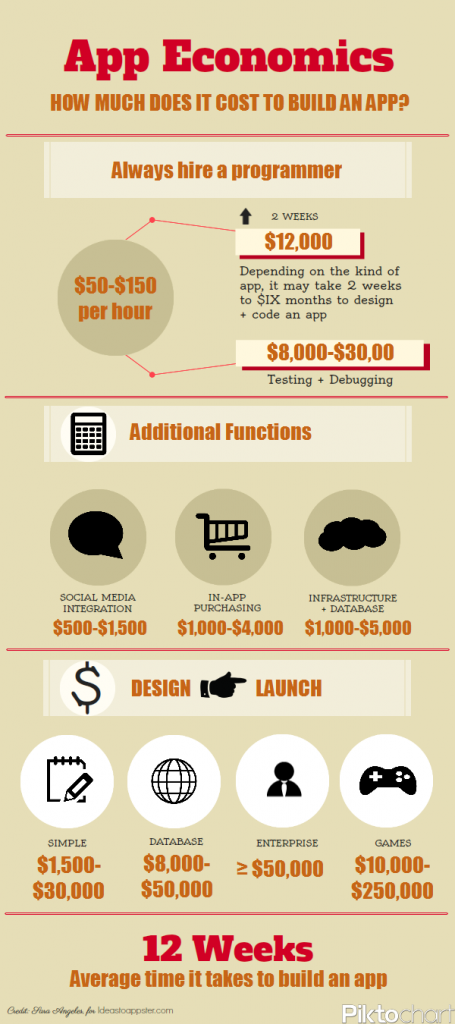 nine0083 Based on the foregoing, the presence of relatives during the delivery of a pregnant woman (partner birth) is equivalent to visiting patients in structural units of a stationary type.
nine0083 Based on the foregoing, the presence of relatives during the delivery of a pregnant woman (partner birth) is equivalent to visiting patients in structural units of a stationary type.
Removal of restrictions will be possible with the improvement of the epidemiological situation for influenza and SARS in the Yaroslavl region.
⚡⚡⚡
Memo for medical workers on the differential diagnosis of COVID-19 with influenza and SARS, determining the tactics of managing patients, including children, the elderly and pregnant women with the algorithm of actions of medical workers providing medical care on an outpatient basis , including at home, to patients with acute respiratory viral infections and Leaflet for the public (link) on the prevention and treatment of seasonal influenza, COVID-19, RS infection and other acute respiratory viral infections (letter from the Ministry of Health of the Russian Federation dated November 28, 2022 No. 30-4 / I / 1-20344)
------------------------------------------------ -------------------------------------------------- -------------------------------------------------- ---------
⚡⚡⚡
Taking into account the epidemiological situation, there is currently a restriction on visits to inpatient departments of the Perinatal Center.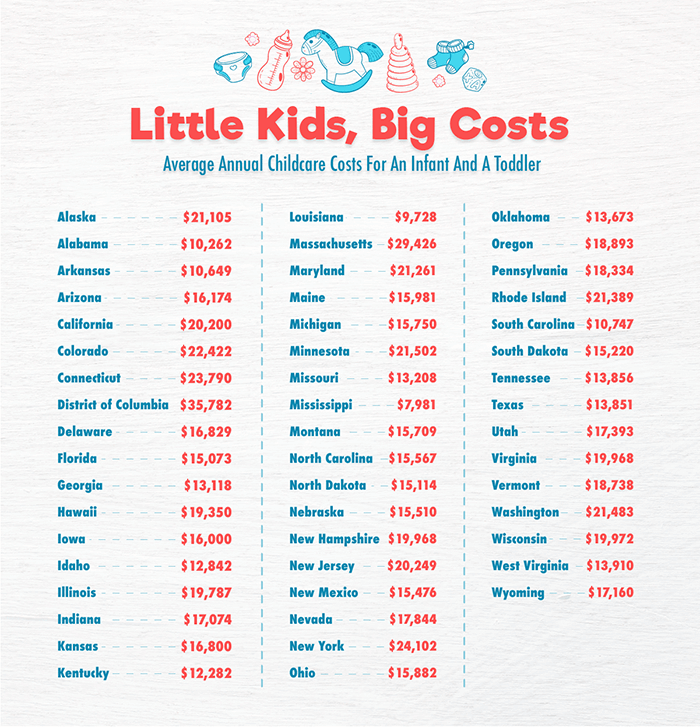 nine0003
nine0003
⚡⚡⚡ Information for accompanying persons
Due to the increased risk of the spread of COVID-19, persons accompanying outpatient departments are not allowed to stay in the building of the Perinatal Center. Entrance to the building of the Perinatal Center is allowed only for accompanying disabled patients and patients with disabilities.
⚡⚡⚡ Information for infertile patients requiring ART
In accordance with the order of the Ministry of Health of the Russian Federation dated July 31, 2020 No. 803n “On the procedure for the use of assisted reproductive technologies, contraindications and restrictions on their use”, which entered into force on January 1, 2021, the presence of indications for ART programs is carried out by the attending physician. He also draws up a referral for infertility treatment by IVF.
To get a referral, you need to consult a reproductive health specialist at the Department of Reproductive Health of the Regional Perinatal Center, who decides on referral to the IVF program.